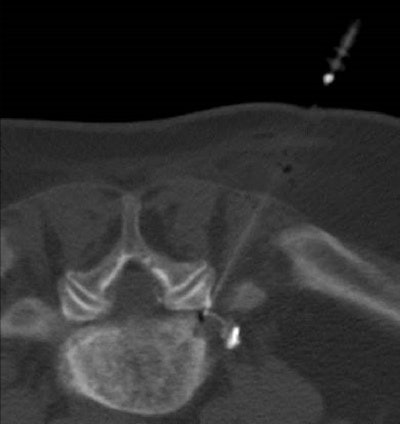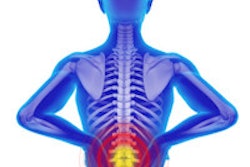
Acute back pain often disappears as quickly as it appears. Where back pain is the result of stress or postural problems, analgesic drugs and physiotherapy can often help. In around 90% of back pain cases, a couple of sessions in the gym can sometimes work wonders, but the correct use of diagnostic imaging procedures can shed light on back pain, according to Dr. Rainer Braunschweig, director of the Diagnostic and Intraoperative Imaging Clinic in Halle, Germany.
Medical advice should to be sought if back pain persists for a lengthy period as a thorough physical examination may explain possible causes. Frequently, the pain is due to muscle problems or lumbago; in such cases, intervertebral disk tissue can press on nerves within the spinal canal. Patients don't automatically need to move on to imaging just because the doctor is unable to pinpoint a physical cause, but if the pain persists for more than six weeks or intensifies, further effort is needed to find the cause, he explained.
 Dr. Rainer Braunschweig.
Dr. Rainer Braunschweig."If the primary care physician who carries out a clinical examination has even the slightest suspicion of a physical cause, the patient will need to undergo some form of diagnostic imaging investigation. This is the time to consider an MRI scan," Braunschweig said.
X-rays provide a very clear image of skeletal structures, while MRI can provide a picture of the physical-chemical condition of organs and this in turn allows for very precise specialist diagnostics. This means that the actual source of the pain -- the spinal column, musculature, or nerves -- can be identified very clearly. Such precision is impossible using only x-rays, as illustrated by the fact that the elderly are constantly undergoing skeletal changes that are very clearly seen on an x-ray, but their pain is not always consistent with such changes and this raises a key question.
"Who is it that definitely needs diagnostic imaging?" he asked. "This is where the [general practitioner] needs to be brought in. If imaging is to be the option, it needs to be an MRI scan. The patient must progress swiftly through the entire process. This can only happen if a sensible approach to diagnostics is adopted within the primary care system."
When imaging is the sensible option
According to the German National Disease Management Guidelines for Back Pain, indiscriminate use of diagnostic imaging comes with a high price tag in terms of direct and indirect costs: the cost of the actual investigation and follow-on costs arising in the wake of chronicity or of action for which there is no indication. Often, health insurance companies will also use incorrect financial incentives, he explained.
For both the individual and for the economy, it is important that imaging be targeted at specific types of back pain where there may be a physical cause, and that it be used if the red flags listed below are present in cases of nonspecific back pain.
If red flags are present in the context of acute back pain, diagnostic imaging appropriate to clinical investigations will need to be carried out, Braunschweig said. Such red flags may manifest themselves as neurological signs, e.g., pain radiating down into the legs, numbness and tingling, anal paresthesia, decreasing pain with increasing lameness, and weakness in the muscles, bladder, and rectum.
Additional red flags that call for diagnostic imaging are weight loss, loss of appetite, fever, shivering, severe nocturnal pain, patients over 50 years of age, history of accidents or injuries, and former cancer patients or patients who are on immunosuppressant drug treatment.
 CT-guided periradicular therapy can treat chronic pain caused by degenerative diseases of the spine. Image courtesy of Dr. Kai Wilhelm, Chefarzt Radiologie Johanniter Krankenhaus Bonn.
CT-guided periradicular therapy can treat chronic pain caused by degenerative diseases of the spine. Image courtesy of Dr. Kai Wilhelm, Chefarzt Radiologie Johanniter Krankenhaus Bonn.In cases where back pain lasts for more than six weeks and where there is no improvement despite treatment, or the pain actually becomes even more severe, a single diagnostic imaging procedure will be needed, he noted. In cases of chronic back pain that persists for more than 12 weeks despite prescribed treatment, a single diagnostic imaging procedure will be needed once psychosocial chronicity factors have been excluded, unless this has been carried out previously. If psychological chronicity factors are present in cases of pain that has persisted for more than 12 weeks, diagnostic imaging should only take place if evidence is found that points to a physical disorder.
According to the German guidelines, diagnostic imaging investigations should not be carried out in cases of acute lower back pain where the possibility of a harmful development of the condition has been clinically ruled out based on a review of the patient's history and a physical examination.
Editor's note: This is an edited version of a translation of an article published in German online by the German Radiological Society (DRG, Deutsche Röntgengesellschaft). Translation by Syntacta Translation & Interpreting. To read the original article, click here.



















